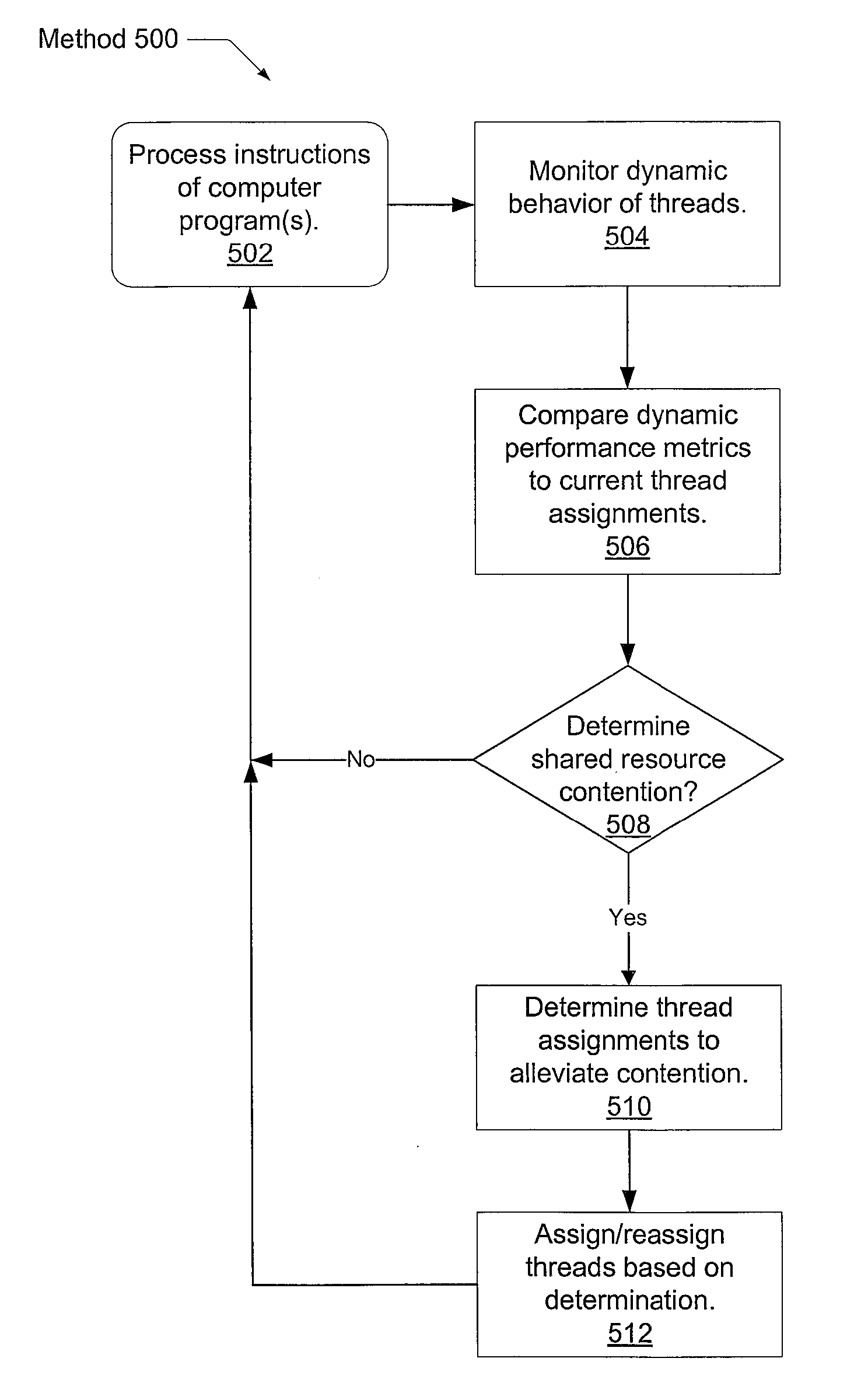Optimized thread scheduling via hardware performance monitoring
a hardware performance monitoring and thread scheduling technology, applied in the field of computing systems, can solve problems such as multi-cycle stall, computation unit that is seeking to utilize a shared resource, cannot be granted access, and may need to stall
- Summary
- Abstract
- Description
- Claims
- Application Information
AI Technical Summary
Benefits of technology
Problems solved by technology
Method used
Image
Examples
Embodiment Construction
[0021]In the following description, numerous specific details are set forth to provide a thorough understanding of the present invention. However, one having ordinary skill in the art should recognize that the invention may be practiced without these specific details. In some instances, well-known circuits, structures, and techniques have not been shown in detail to avoid obscuring the present invention.
[0022]Referring to FIG. 1, one embodiment of an exemplary microprocessor 100 is shown. Microprocessor 100 may include memory controller 120 coupled to memory 130, interface logic 140, one or more processing units 115, which may include one or more processor cores 112 and corresponding cache memory subsystems 114; crossbar interconnect logic 116, a shared cache memory subsystem 118, and a shared graphics processing unit (GPU) 150. Memory 130 is shown to include operating system code 318. It is noted that various portions of operating system code 318 may be resident in memory 130, in o...
PUM
 Login to View More
Login to View More Abstract
Description
Claims
Application Information
 Login to View More
Login to View More - R&D
- Intellectual Property
- Life Sciences
- Materials
- Tech Scout
- Unparalleled Data Quality
- Higher Quality Content
- 60% Fewer Hallucinations
Browse by: Latest US Patents, China's latest patents, Technical Efficacy Thesaurus, Application Domain, Technology Topic, Popular Technical Reports.
© 2025 PatSnap. All rights reserved.Legal|Privacy policy|Modern Slavery Act Transparency Statement|Sitemap|About US| Contact US: help@patsnap.com



